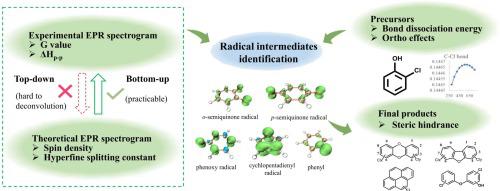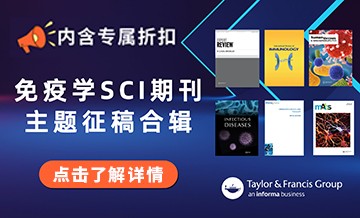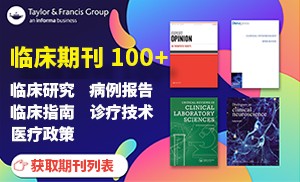Journal of Hazardous Materials ( IF 12.2 ) Pub Date : 2022-11-09 , DOI: 10.1016/j.jhazmat.2022.130367
Xiaoyun Liu 1 , Guorui Liu 2 , Shuting Liu 1 , Linjun Qin 1 , Bingcheng Lin 2 , Mingxuan Wang 1 , Lili Yang 3 , Minghui Zheng 2

|
Organic free radical intermediates are pivotal to our understanding of toxic chemicals formation from chlorophenols that widely exist in thermal processes. However, in most cases, multiple free radical intermediates exist and produce complex spectra that are hard to deconvolute. Identification of free radical intermediates is the current difficulty for detailed formation mechanisms of toxic products from chlorophenols. In this study, a universal bottom-up method was developed to identify the organic free radical intermediates. Candidate organic free radicals were firstly speculated according to the critical parameters obtained from experimental electron paramagnetic resonance (EPR) spectra and the calculated bond dissociation energies of precursors. Their theoretical spectra were then used retrospectively to justify the accordance with the experimental EPR spectra. Identification of the organic free radicals provides straightforward evidence for the formation pathways of pollutants from chlorophenol. Internal factors influencing formation of radical intermediates and the toxic products were also studied, including the ortho effect of the precursor, spin densities of the organic free radical intermediates, and steric hindrance effects of the molecular intermediates. In combination of the experimental results and theoretical calculations, detailed formation mechanisms of toxic pollutants intermediating by organic free radicals from thermal oxidation of chlorophenol were strongly evidenced.
中文翻译:

邻氯苯酚形成有毒有机化合物的自由基机理
有机自由基中间体对于我们了解热过程中广泛存在的氯酚形成有毒化学品至关重要。然而,在大多数情况下,存在多种自由基中间体并产生难以解卷积的复杂光谱。自由基中间体的鉴定是目前氯酚有毒产物详细形成机制的难点。在这项研究中,开发了一种通用的自下而上方法来识别有机自由基中间体。首先根据实验电子顺磁共振 (EPR) 光谱和计算的前体键解离能获得的临界参数推测候选有机自由基。然后回顾性地使用他们的理论光谱来证明与实验 EPR 光谱的一致性。有机自由基的鉴定为氯苯酚污染物的形成途径提供了直接的证据。还研究了影响自由基中间体和毒性产物形成的内部因素,包括前体的邻位效应、有机自由基中间体的自旋密度和分子中间体的位阻效应。结合实验结果和理论计算,有力地证明了氯苯酚热氧化产生的有机自由基介导的有毒污染物的详细形成机制。有机自由基的鉴定为氯苯酚污染物的形成途径提供了直接的证据。还研究了影响自由基中间体和毒性产物形成的内部因素,包括前体的邻位效应、有机自由基中间体的自旋密度和分子中间体的位阻效应。结合实验结果和理论计算,有力地证明了氯苯酚热氧化产生的有机自由基介导的有毒污染物的详细形成机制。有机自由基的鉴定为氯苯酚污染物的形成途径提供了直接的证据。还研究了影响自由基中间体和毒性产物形成的内部因素,包括前体的邻位效应、有机自由基中间体的自旋密度和分子中间体的位阻效应。结合实验结果和理论计算,有力地证明了氯苯酚热氧化产生的有机自由基介导的有毒污染物的详细形成机制。有机自由基中间体的自旋密度,以及分子中间体的空间位阻效应。结合实验结果和理论计算,有力地证明了氯苯酚热氧化产生的有机自由基介导的有毒污染物的详细形成机制。有机自由基中间体的自旋密度,以及分子中间体的空间位阻效应。结合实验结果和理论计算,有力地证明了氯苯酚热氧化产生的有机自由基介导的有毒污染物的详细形成机制。







































 京公网安备 11010802027423号
京公网安备 11010802027423号